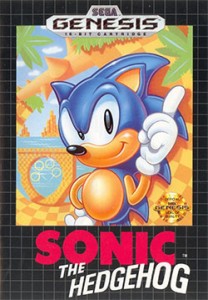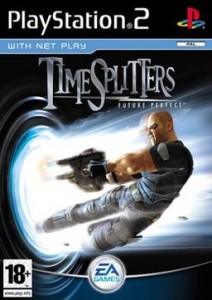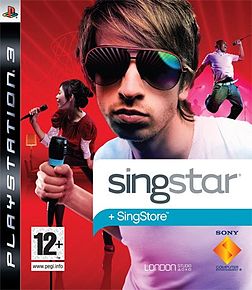303rd played so far
 Genre: Action/Role-Playing
Genre: Action/Role-Playing
Platform: Xbox 360/Playstation 3/PC
Year of Release: 2010
Developer: Bioware
Publisher: Electronic Arts
Woo! Time for something else fun. Aside from my documented love of Bioware, we both rushed through the original Mass Effect after our blog write-up.
Mass Effect 2, from what we’ve seen, has decided to become a bit more of a shooter and a bit less of an RPG. Possibly a shame for me (and a real woohoo from me), but the main thing in the game are the characters, not just the stats, right?
Our Thoughts
As I’m writing this, Peter is finishing the last few assignments on this game before he dives into the end game (helped with having a few weeks of deserved holiday), while I’ll soon start the second half of the game. In between playing other games, we’ve been getting into the game and enjoying it a lot.
It’s debatable which of the two games is better. Mass Effect seems to offer the stronger customization system, with more options per level, while Mass Effect 2 has an extended cover and shooter set-up (as well as – yuck – quick time events in conversations). There’s less tweaking of gear and such (possibly a good thing) but you’re missing some of the vital stats to determine which weapons are better.
On the other hand, parts of this have actually expanded. Raise a stat far enough (with less possible ‘levels’ than in the first game) and you get to customize part of its use, specializing in one or two versions – lower cooldown, damage or adding splash damage are quite common. Instead of getting weapon upgrades, you research squad upgrades, which improve your weapons, but also improve your armour, biotics and (in several places) your ship’s capabilities.
Overall, while it’s a shape you lose part of the customization (the streamlining feeling a bit much) the added systems work quite nicely. It’s a shame they didn’t keep a bit more of it around.
Still, this is Bioware, so the systems aren’t the most important thing. It’s story and characters they specialize in. The story is as good as you’d expect. There are some interesting twists and turns, none necessarily diverging too far from the obvious path the story takes, but fun enough to offer a different perspective and give a few different versions of the same story. While there are a few ‘you must now do stuff’ moments, with only minor foreknowledge you can prepare yourself pretty well for those points.
It’s the characters where the game really shines. We’ve got Joker again, who’s as entertaining as ever (in particular when bantering with your new ship’s AI), joined again by many non-party crew members who join you. More of these will interact with you than in the previous games, and even those that don’t have conversations when you’re around that comment on the events of the game.
More visible, however, are the party members. Their number has increased from six to ten (plus two DLC. And one sort-of substitute). Their amount of characterization seems to have increased. There are more conversations with your party members, and they’re longer. It feels like there are more interactions and interjections into the game. While the famous elevator sequences are lost, the times where you get interactions are more integrated.
Whilst it is still fun to mix things up I still managed to rely on a main party for most missions with others being brought in for the sake of variety. One thing that this game did compared to the original is balance out the members more. In the original Tali died very quickly and so I never used her (so I did mourn the idea of a loyalty mission); now she actually has as much a place in my team as most others. In the end I did rely on a main team of Garrus and Miranda for the majority of the game. Despite the fact that I have a bit of a crush on Miranda.
I suppose that’s one thing that’s lost with the larger group though. While individually, they’re more detailed, they don’t get as much of a chance to interact as they do before. There are a few comments during cut scenes – all set up beforehand – but not the more spontaneous-seeming interactions from having two characters in your group.
Thing is, the way the characters are in there, you don’t notice it as much. The characters are more quiet (with, it seems, the amount of interactions partially down to who you have with you), but you find out enough through the interludes on the Normandy that it doesn’t matter as much during the action scenes.
Despite few of the characters from the first game being part of your team this time (only two out of six), there is one other characters that I did miss while playing. The MAKO, your trusty ground vehicle for planetary exploration, is gone, replaced by a (costlier) scanning and probing mini-game that sends you to further missions, and a mission structure that dumps you in the right place straight away rather than forcing you to travel to find the right place.
While it streamlines the game and missions, it loses some of the game’s flavour. The exploration was fun, trying to find smaller pieces and collectables, while the extended focus on missions, together with its XP streamlining and stats simplification takes some of the RPG and gameplay changes out of the game in favour of focusing on some of the more shooter aspects. It’s a shame.
Final Thoughts
The big question that remains, really, is which is better. The original Mass Effect gave more of a RPG environment, which was streamlined in the sequel, improving the story aspects but also adding more shooter and action elements. I can see how it would appeal with a larger group of people, I just wish there could have been more of a combination in between the two.
As it is, the first probably feels better overall, but on the other hand, they complement each other nicely. Now I just need to finish it so we can both move on to the big finale of the third game.
Personally, whilst I did play on Mass Effect 2 for about 26 hours this game still felt a bit short compared to the first one. I also think that it was a bit easier than the original (or that could be because I finally started using the biotic powers instead of rushing into rooms of Geth and other nasties. All I can say is… I am biding my time with Saints Row The Third until Jeroen finishes his game so we can start Mass Effect 3 together.
 Genre: Platform
Genre: Platform





